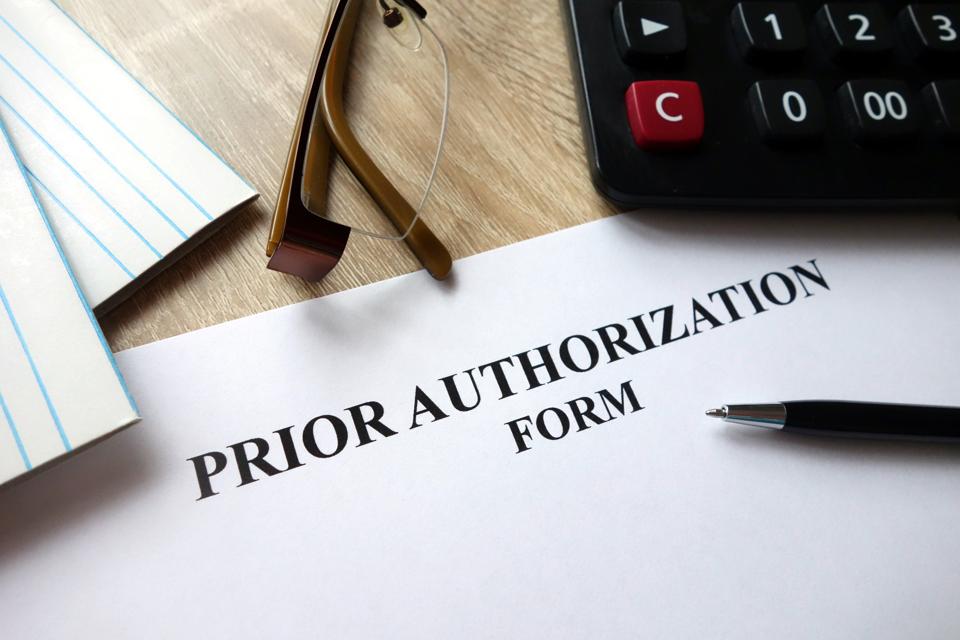Over the last several years, prior authorization has become a hot topic. Nearly all those who have Medicare Advantage plans must deal with it for medical services. You’ve seen the news stories about the denials and their impact on care. A new rule that will be implemented fully by 2027 is supposed to help resolve the issues but time will tell.
Now, in 2025, a new wrinkle – prior authorization problems with Part D prescription drugs. Drug plans have required authorization of select medications since the program started in 2006. However, I have received several calls and emails about problems getting approval, a new phenomenon for me this year.
Because of the Inflation Reduction Act and the $2,000 cap on out-of-pocket drug costs, Part D drug plans are picking up a larger share of the costs. So, they want to make sure they pay only when it is appropriate. Prior authorization is one way to ensure that. Since more enrollees seem to be dealing with this issue, here are some things to know.
There are several reasons why a drug plan requires prior authorization.
The top-three reasons on my list all connect to reducing the costs a plan may have to cover.
- There is a lower-cost alternative drug for the situation.
- Part A, hospital insurance, or Part B, medical insurance, should cover this drug, not the Part D plan.
- This drug being prescribed is not for a medically accepted indication. Part D generally doesn’t cover a drug for off-label use, unless it’s medically necessary, which may not be easy to prove.
Other reasons for authorization can include:
- Drugs with special monitoring requirements
- Certain dosages or forms of a medication
- Controlled substances, and
- Drugs that may interact with other drugs.
One plan may apply prior authorization for a certain medication and another doesn’t.
A man shared with me his prior authorization issue. His “rep” found a new plan that would save him several hundred dollars on premiums. However, now he cannot get a Tier 5, specialty drug, approved. He is mad at his rep for recommending this plan.
Each drug plan identifies the drugs that will be subject to authorization. It’s very possible that costly Tier 4, non-preferred brand, and Tier 5 drugs will require it. After a quick check, I discovered that every plan in the man’s area required authorization for his specialty medication so there was no escaping it.
I have also seen many Tier 3, preferred brand, and even an occasional Tier 2, generic drug, requiring authorization.
Every drug plan has its own procedure and form.
Another man reported that he had been waiting almost two weeks for approval. A drug plan representative told him they could not approve the request because his physician submitted the wrong form.
The insurers’ forms I reviewed range from one to nine pages with some similar questions but enough variation to make using the right form important.
You can find the right form by searching “Part D prior authorization form for (name of drug plan).” Calling the plan is another option but trying to get through to the person who knows something about authorization could be difficult and time-consuming.
The prescriber or the drug plan member can submit the request.
I heard from a woman who ran out of her medication. When she went to get the drug on a Sunday, she was shocked to discover the new plan requires authorization. So she asked the pharmacist to do this.
Pharmacists know the medications but usually are not the prescribers. The physician or healthcare practitioner who knows the rationale for a particular drug would be the best one to handle authorization. But, in a pinch, the plan member has the ability to do this with a supporting statement from the physician.
The form must be completed, in its entirety, with information to support the need for the medication.
When preparing the authorization form:
- Follow the instructions.
- Include a pertinent diagnosis and relevant history, symptoms or findings.
- Explain why other drugs (especially less costly ones) likely won’t work (could have adverse outcomes or not be as effective).
The process can take time.
The same woman thought the pharmacist could get authorization simply by calling the drug plan.
Even if the pharmacist could connect with the right person during a weekend phone call, it’s very unlikely that the plan would grant authorization. After receiving the form and supporting documentation, the plan has to notify the prescriber and enrollee within 72 hours for a standard determination and 24 hours for an expedited one.
Being proactive may help prevent some of the problems
Obtaining prior authorization is generally a physician or prescriber issue. However, when able, Part D enrollees should take some responsibility to smooth out the process as much as possible.
Here’s a list of some things you can do.
- Know whether any of your drugs are subject to authorization. Find that information in the plan’s documents or the Medicare Plan Finder.
- Do not wait until the last minute to deal with this.
- Discuss the situation with your physician. If possible, provide a copy of the plan’s form.
- Watch for notification from the drug plan. If necessary, consider filing an appeal.
- Review other plans during Open Enrollment. You might find one that doesn’t require authorization. But then, check the trade-offs – how this plan works and how much you might pay.
Remember, of course, that determining and obtaining prior authorization when necessary is generally your provider’s responsibility. But you obviously have skin in the game. So, pay attention and never hesitate to ask your provider if there’s anything you can do to facilitate the process.

